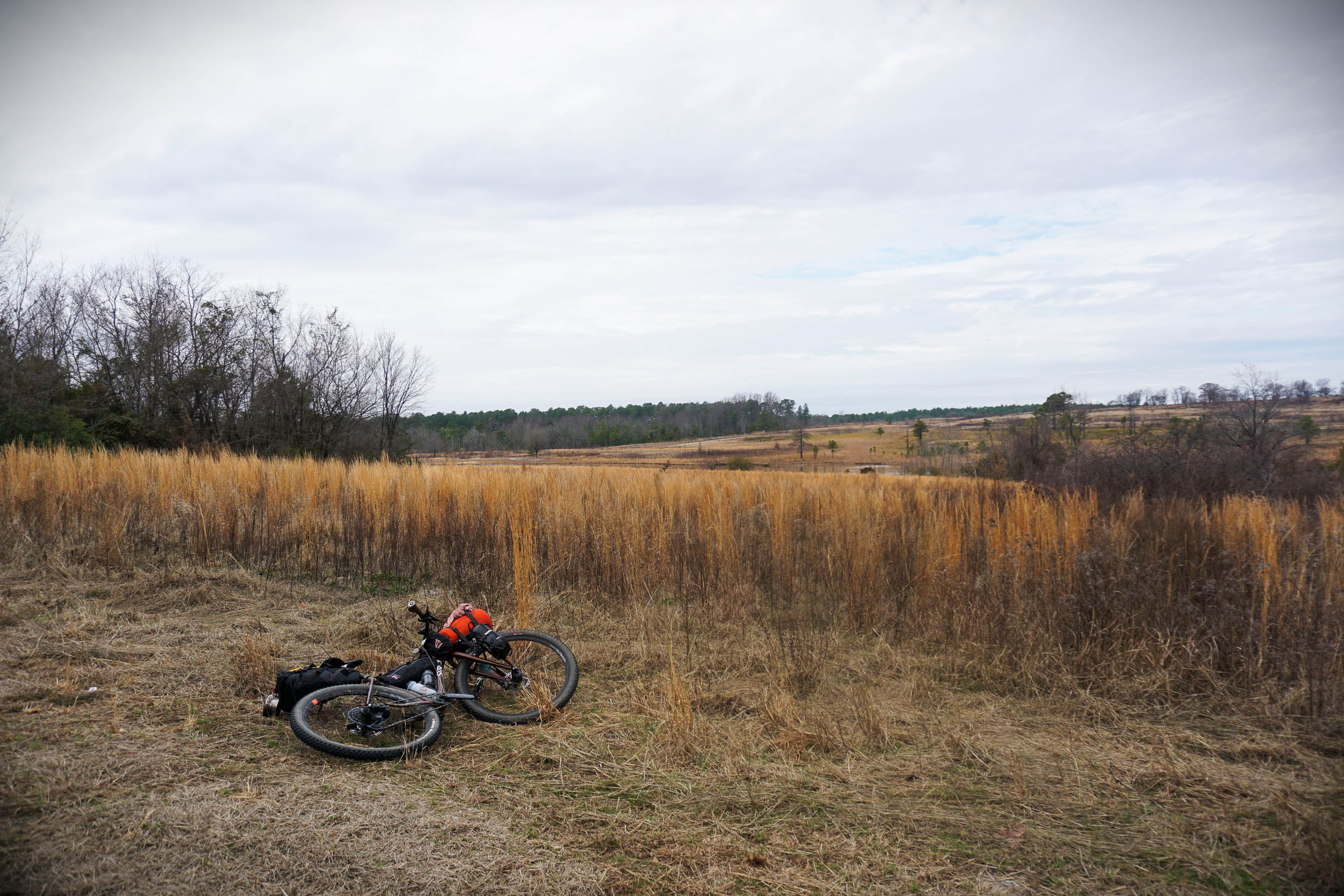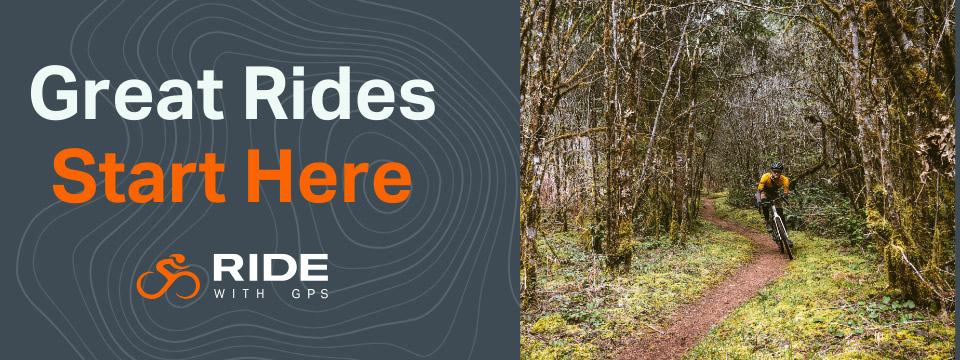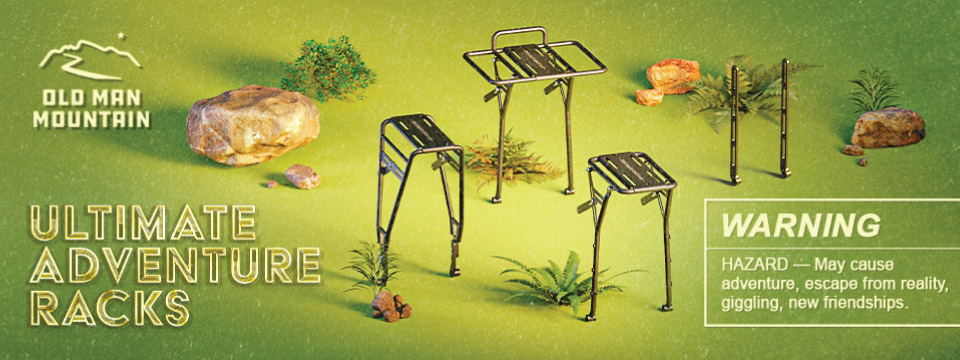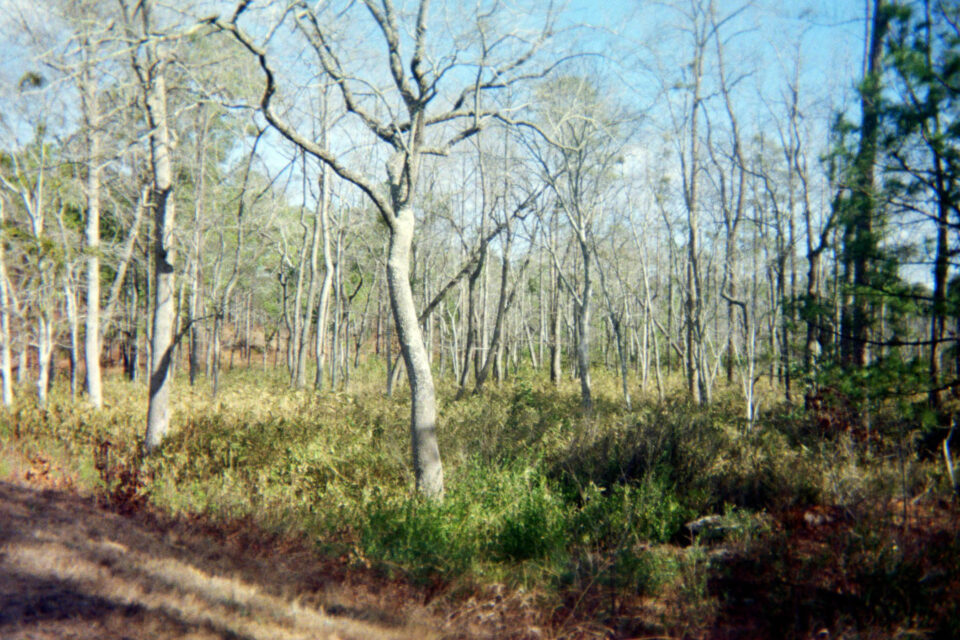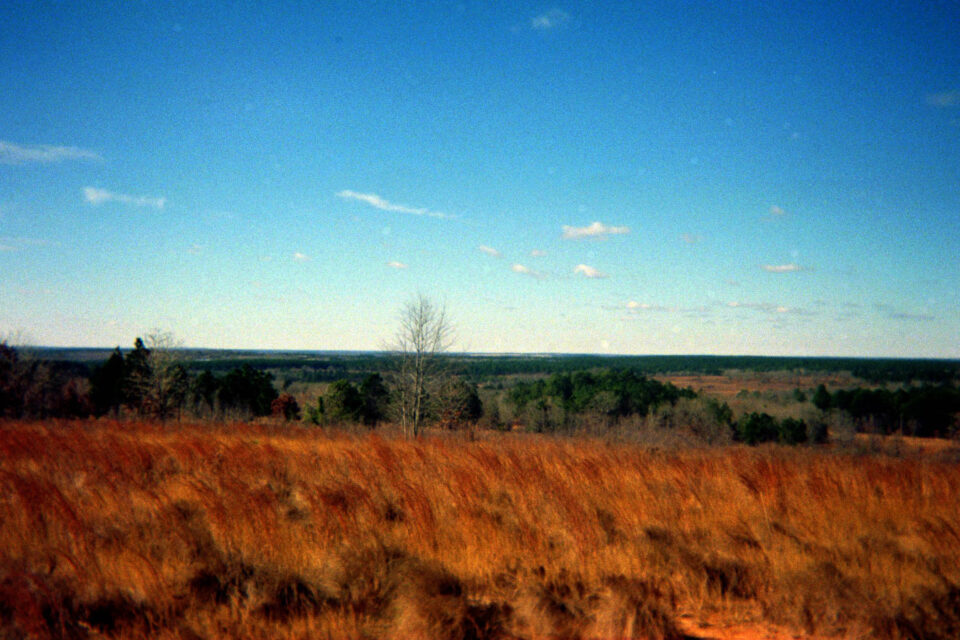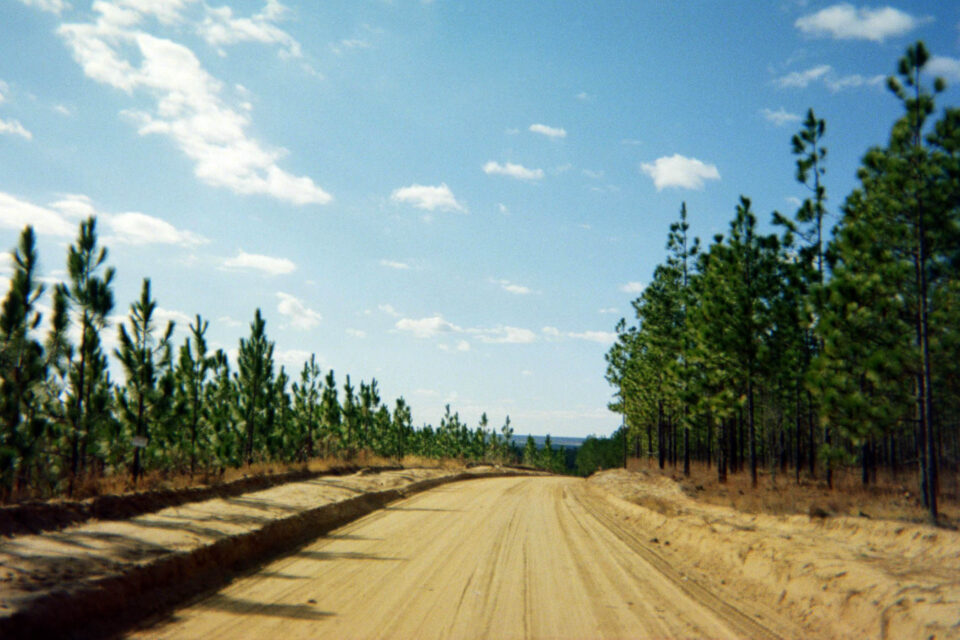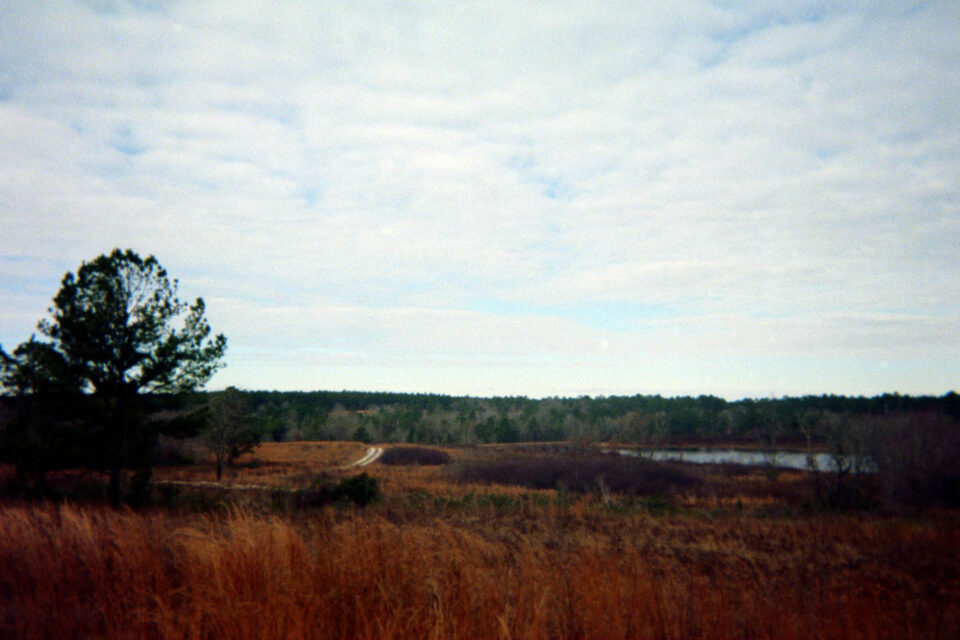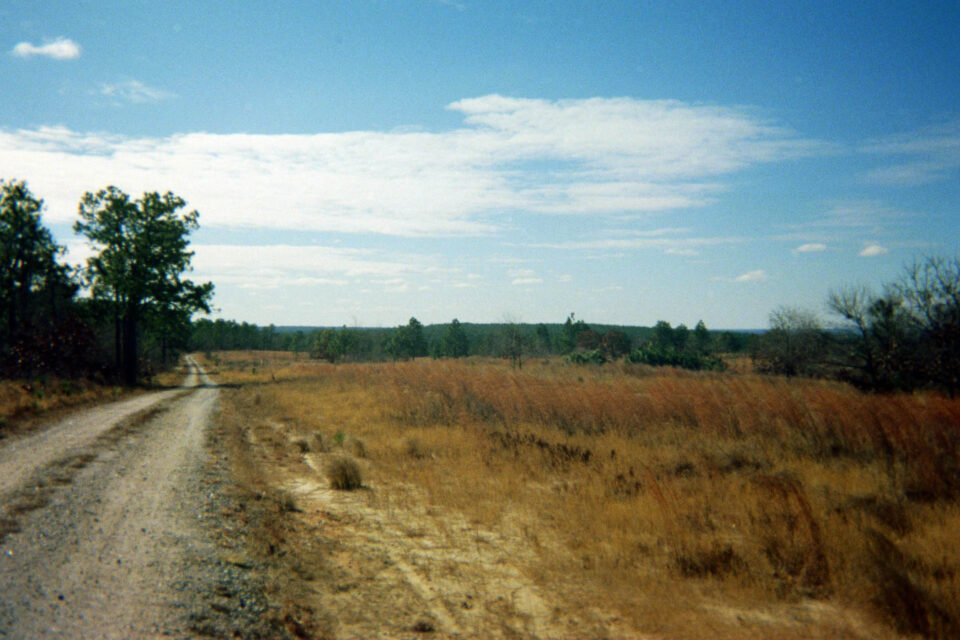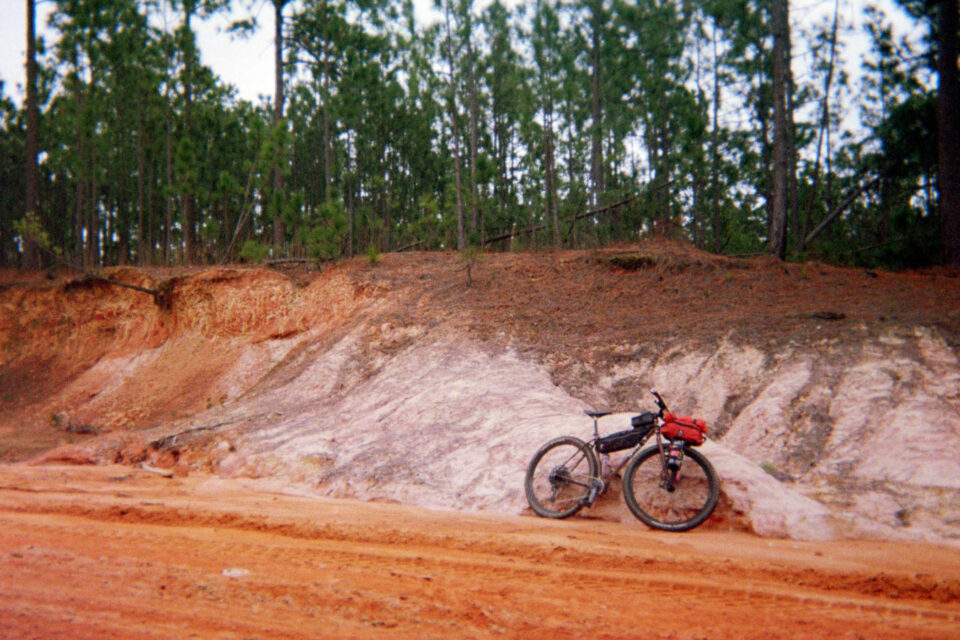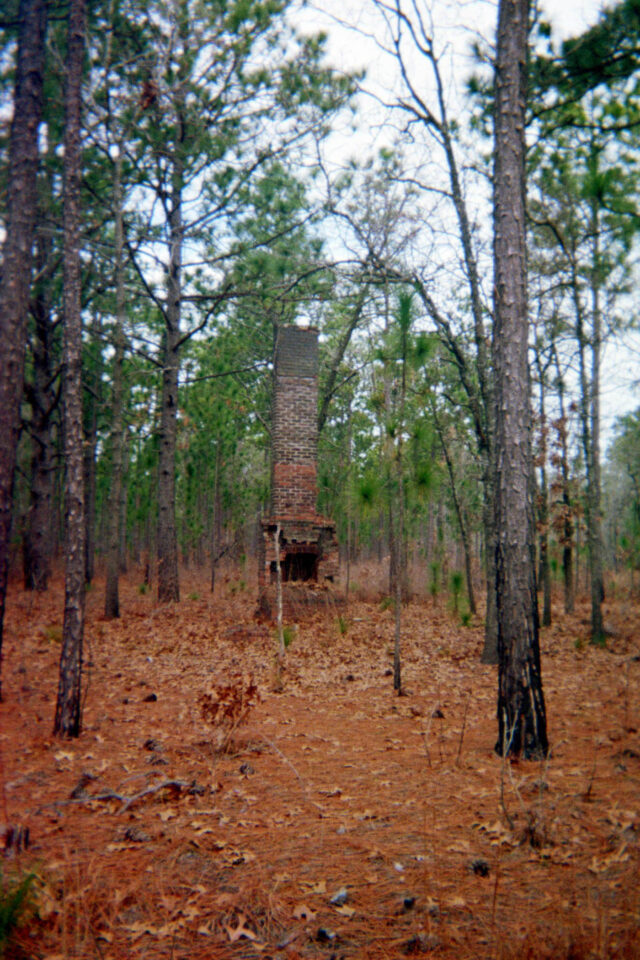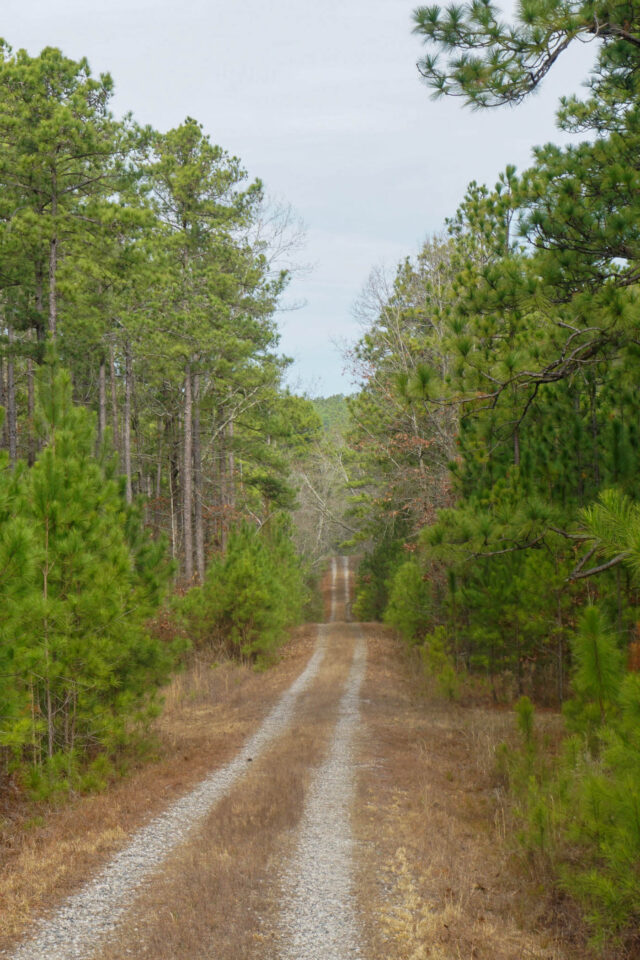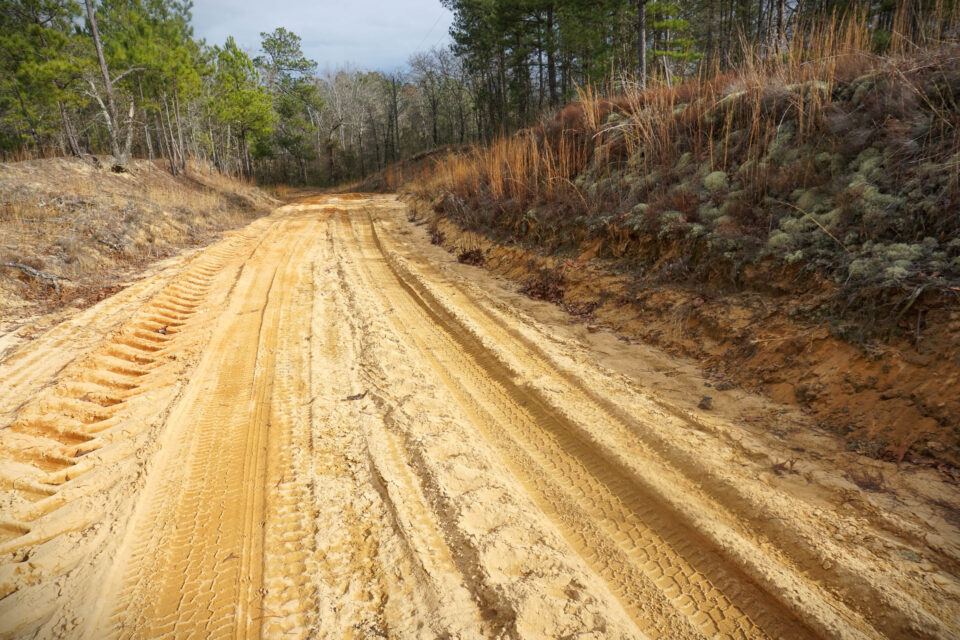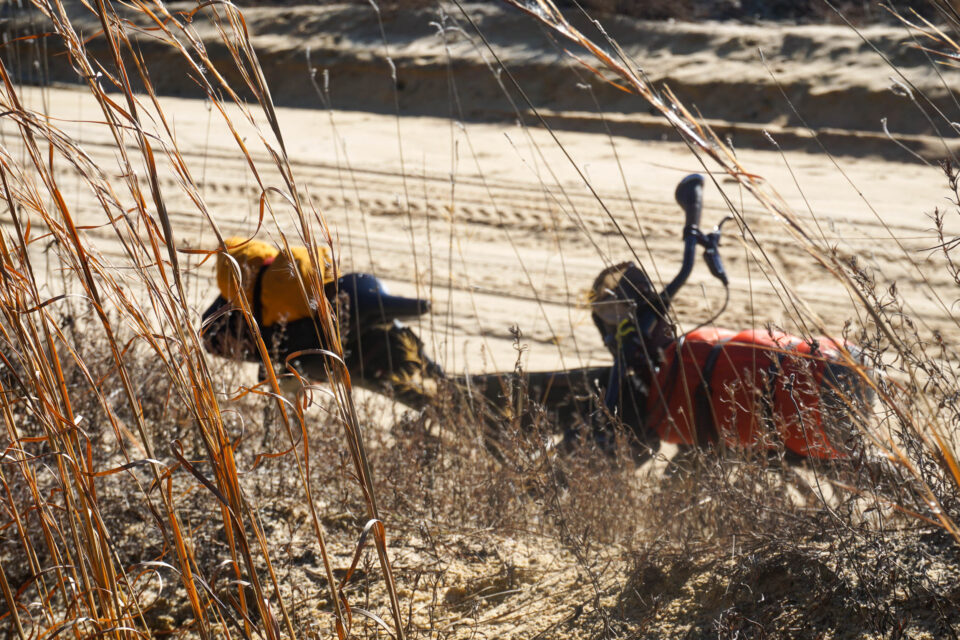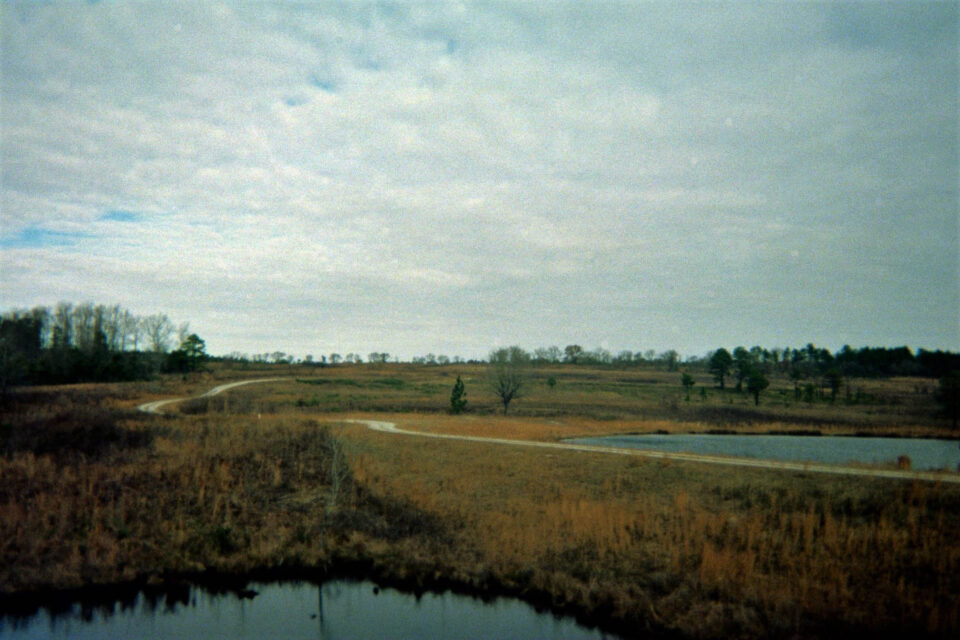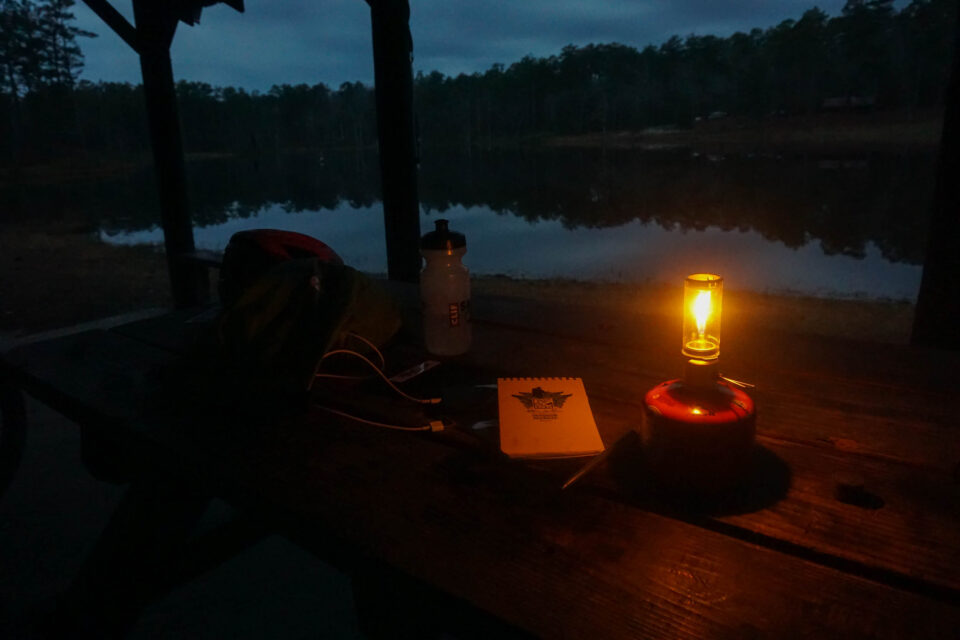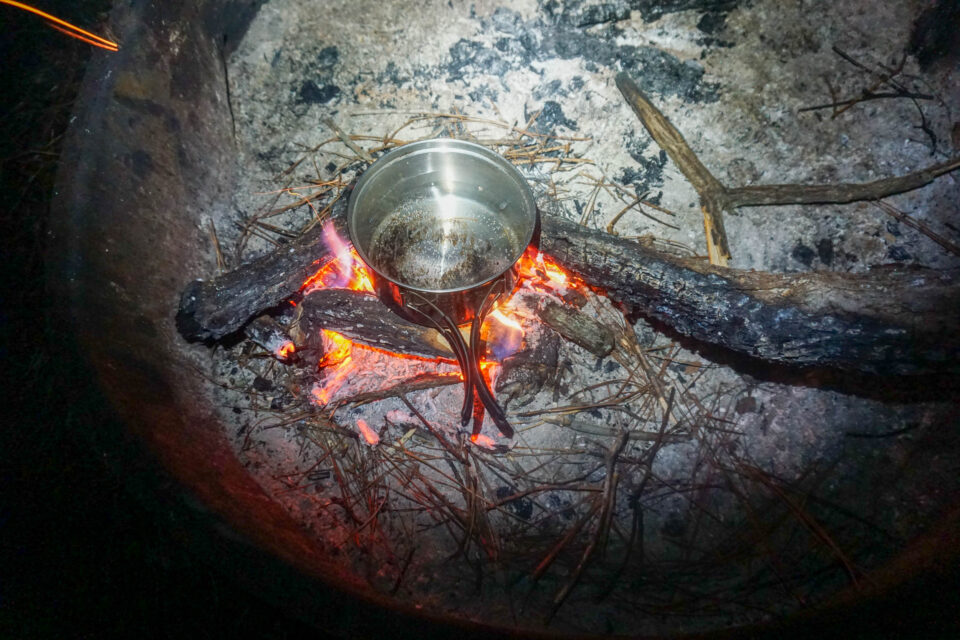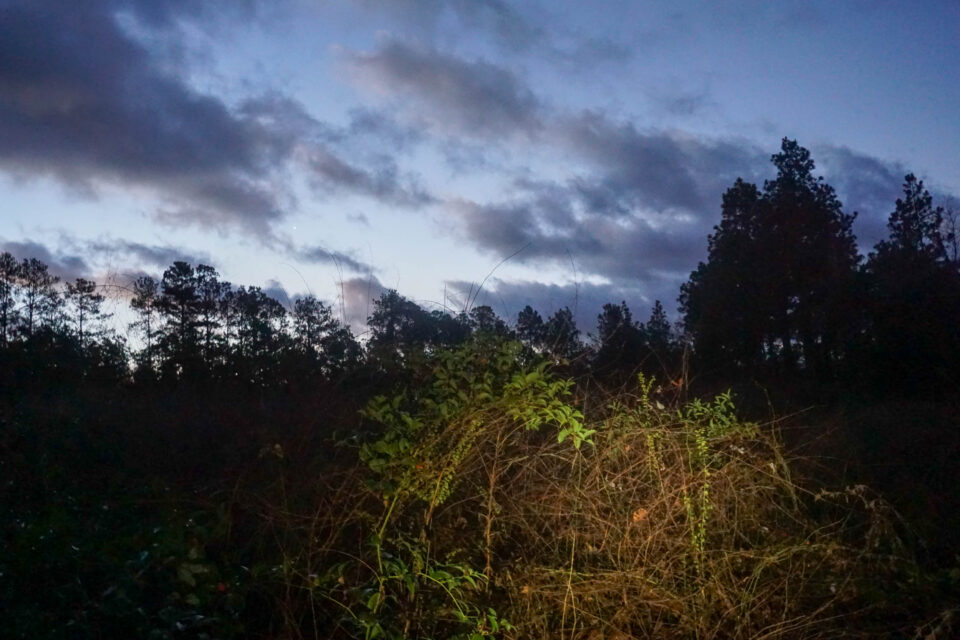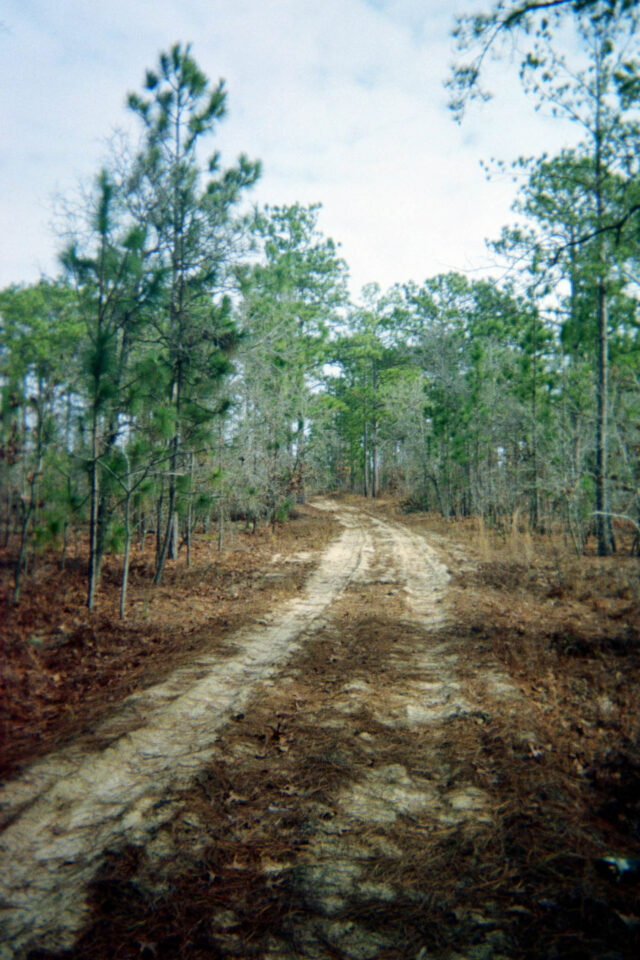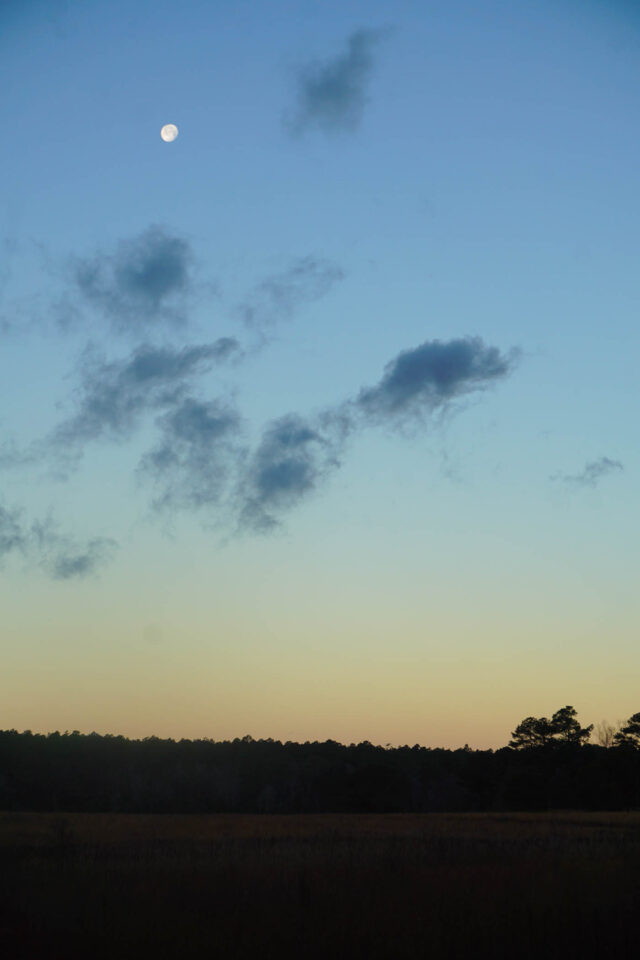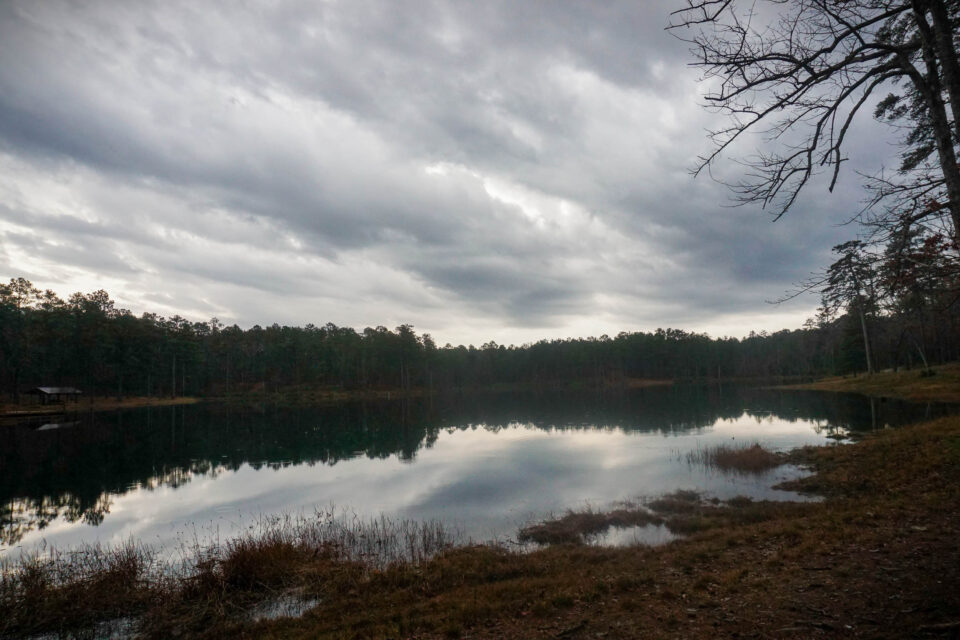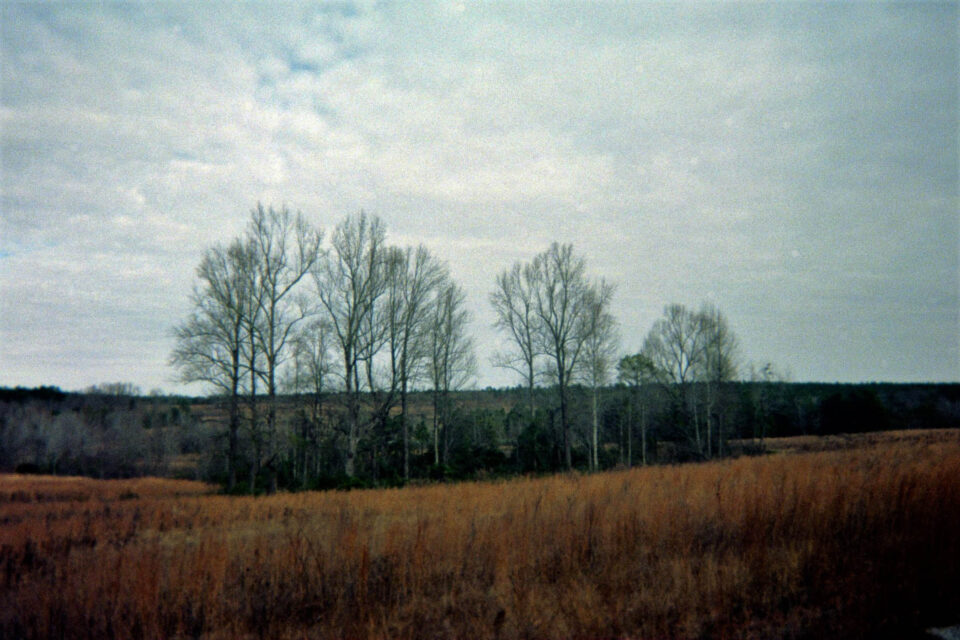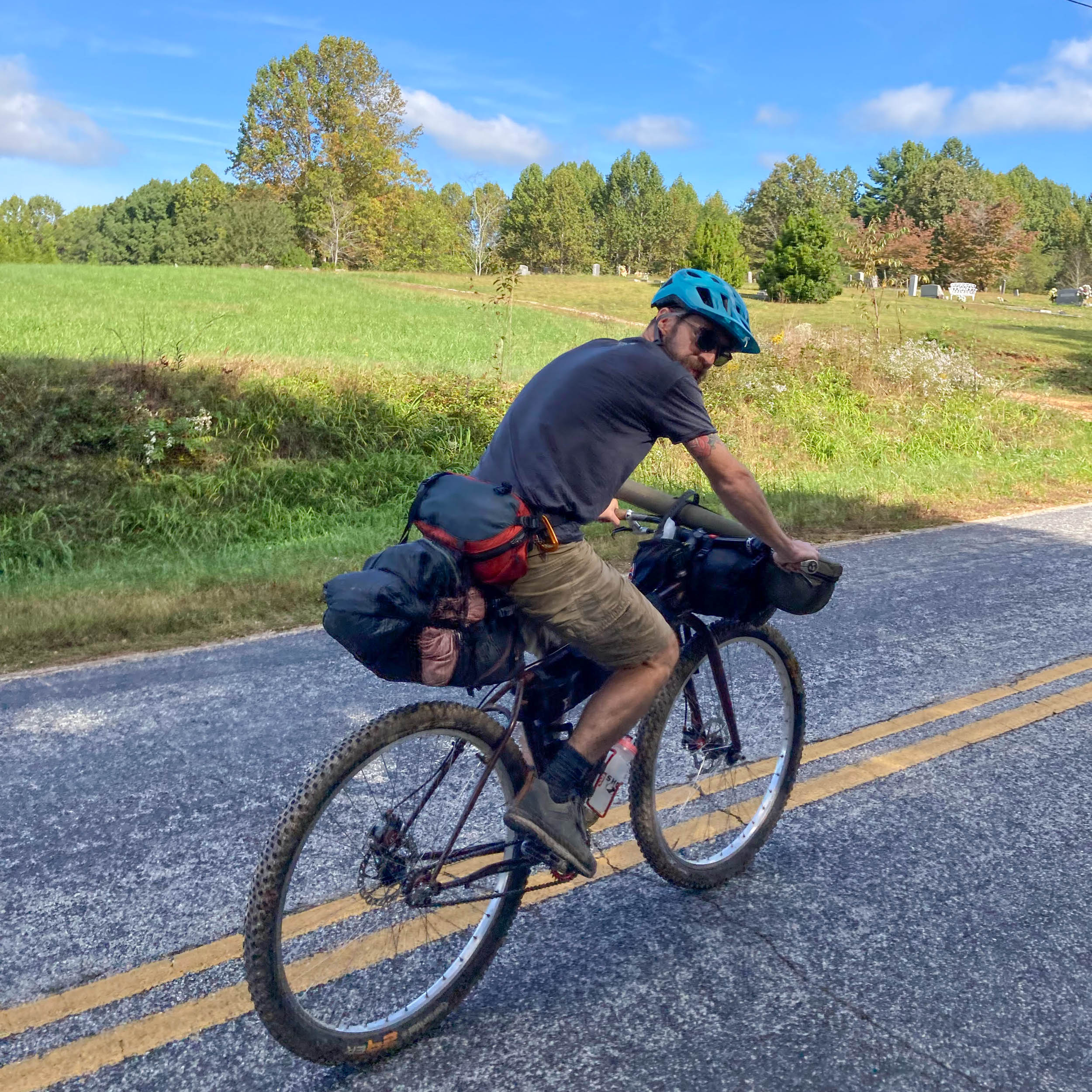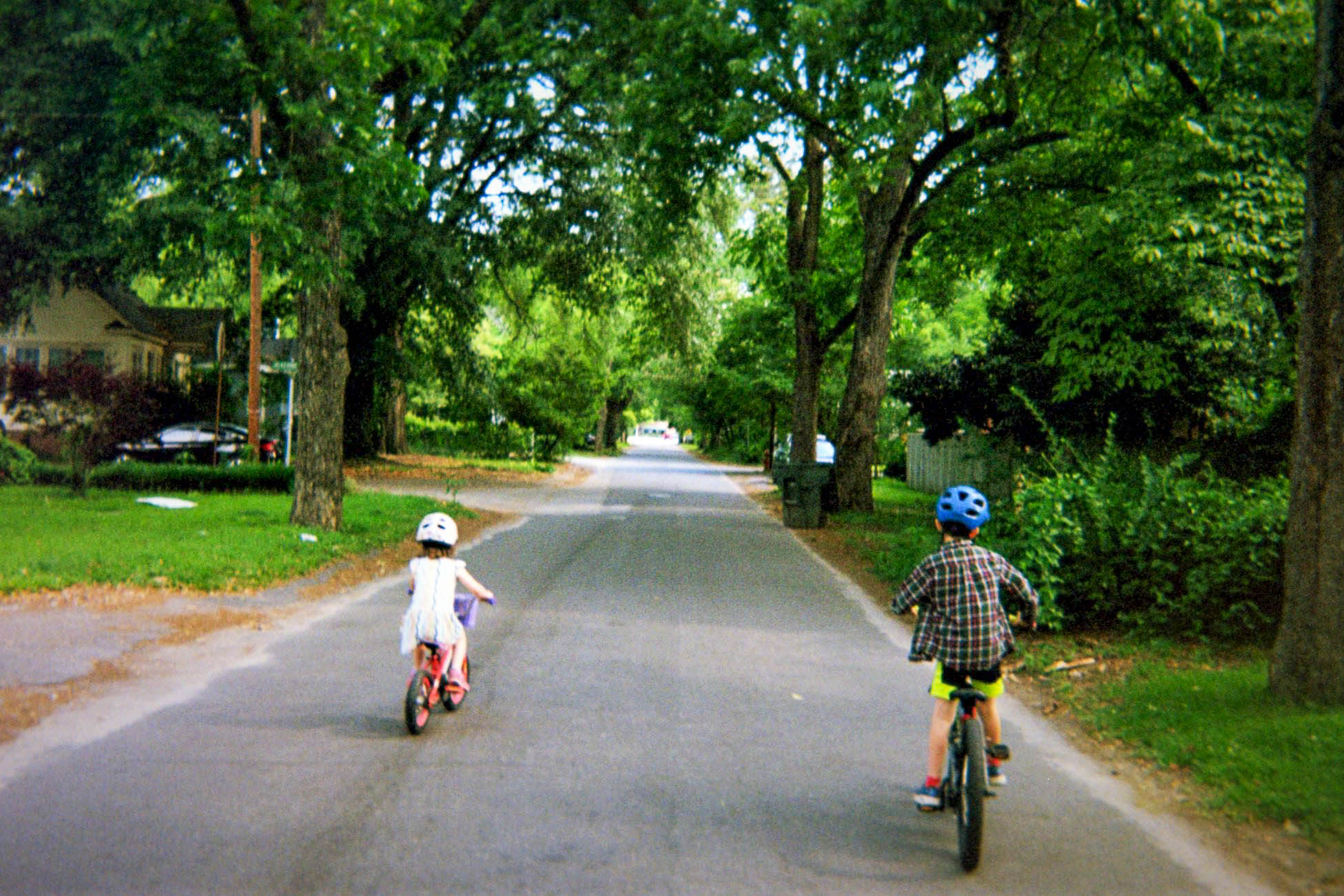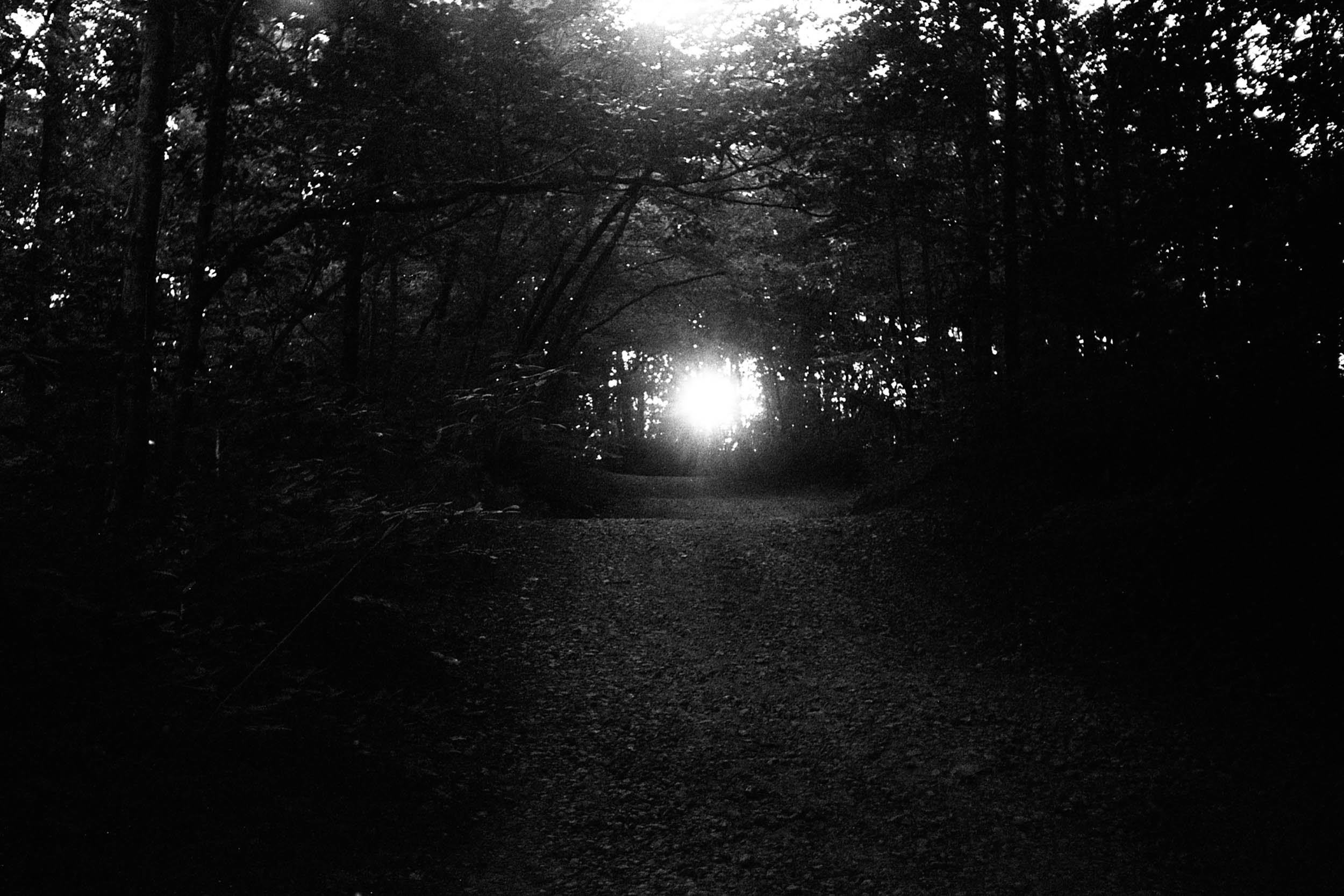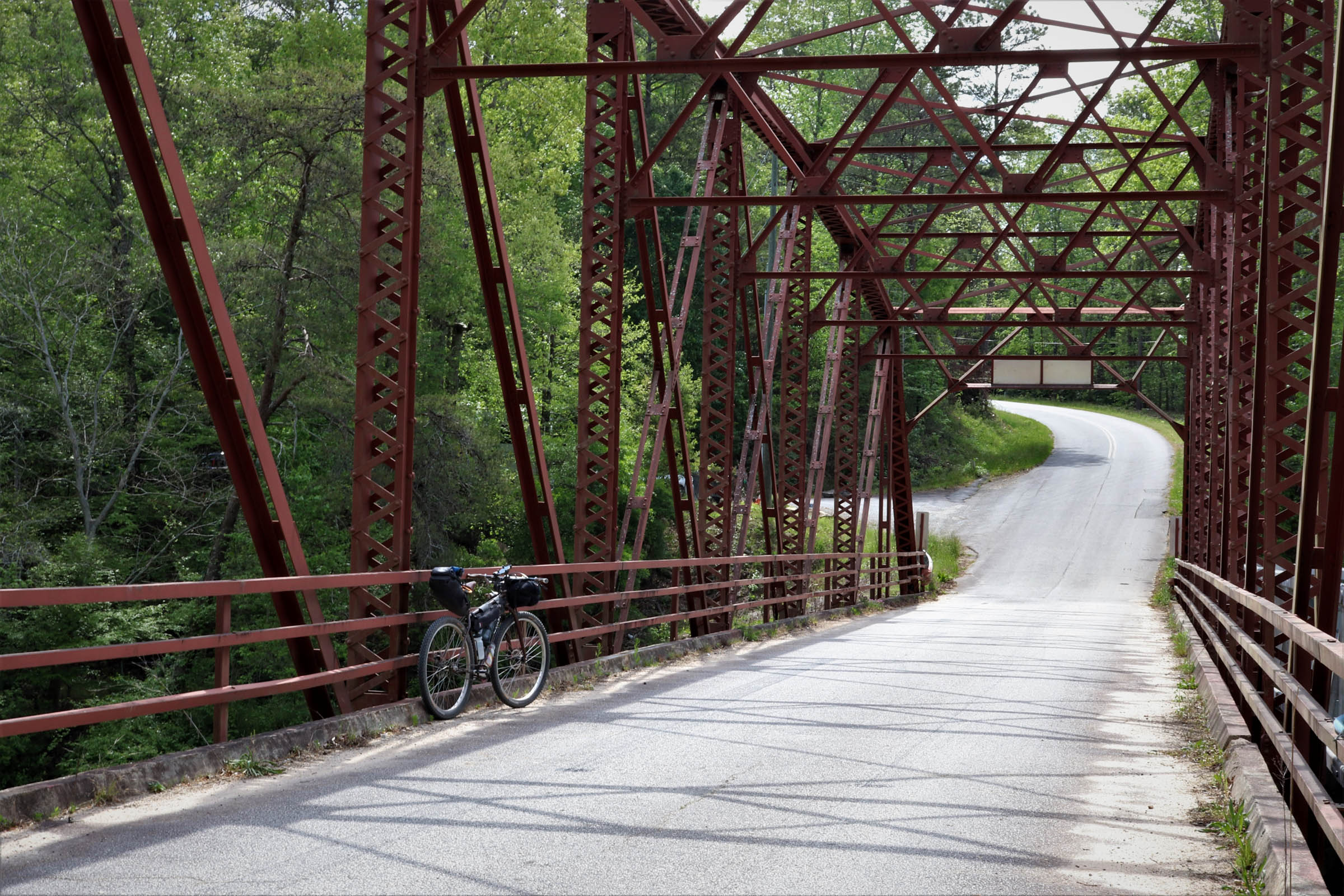Lonesome Lands and Sugar Sand
Share This
Following a slow solo overnighter through South Carolina’s Sandhills National Wildlife Refuge, Tanner Arrington penned this dynamic account that blends a ride report with observations on natural history, reflections on land stewardship, and a zoomed-in perspective on the beauty surrounding us. Find his stirring piece and an accompanying gallery of analog and digital photos here…
Words and photos by Tanner Arrington
Maybe it’s just me, but the word lonesome seems to have a romantic flavor. I don’t think Larry McMurtry would have been drawn to “Lonely Dove”. It had to be Lonesome Dove.
Speaking of McMurtry, he was from Texas, and so am I. Our respective towns are 120 miles apart, but it’s the same kind of country. It’s lonesome country. It’s big and open and full of longing. The earth is dry, and the sky is big. But it’s not that Southwest American desert on cover photos. There are no sky island mountain ranges looming in the distance. There are no magnificent canyons, no stunning rock outcrops. Just expanses of grass and mesquite and prickly pear and the occasional hill or mesa and a million miles of barbed-wire fence.
By the time I finished high school, I wanted little else but to get out of that lonesome country. I made it to Austin for college. But on some weekends, especially in the fall, I found myself driving out of the city into more lonesome places to ride my bike alone.
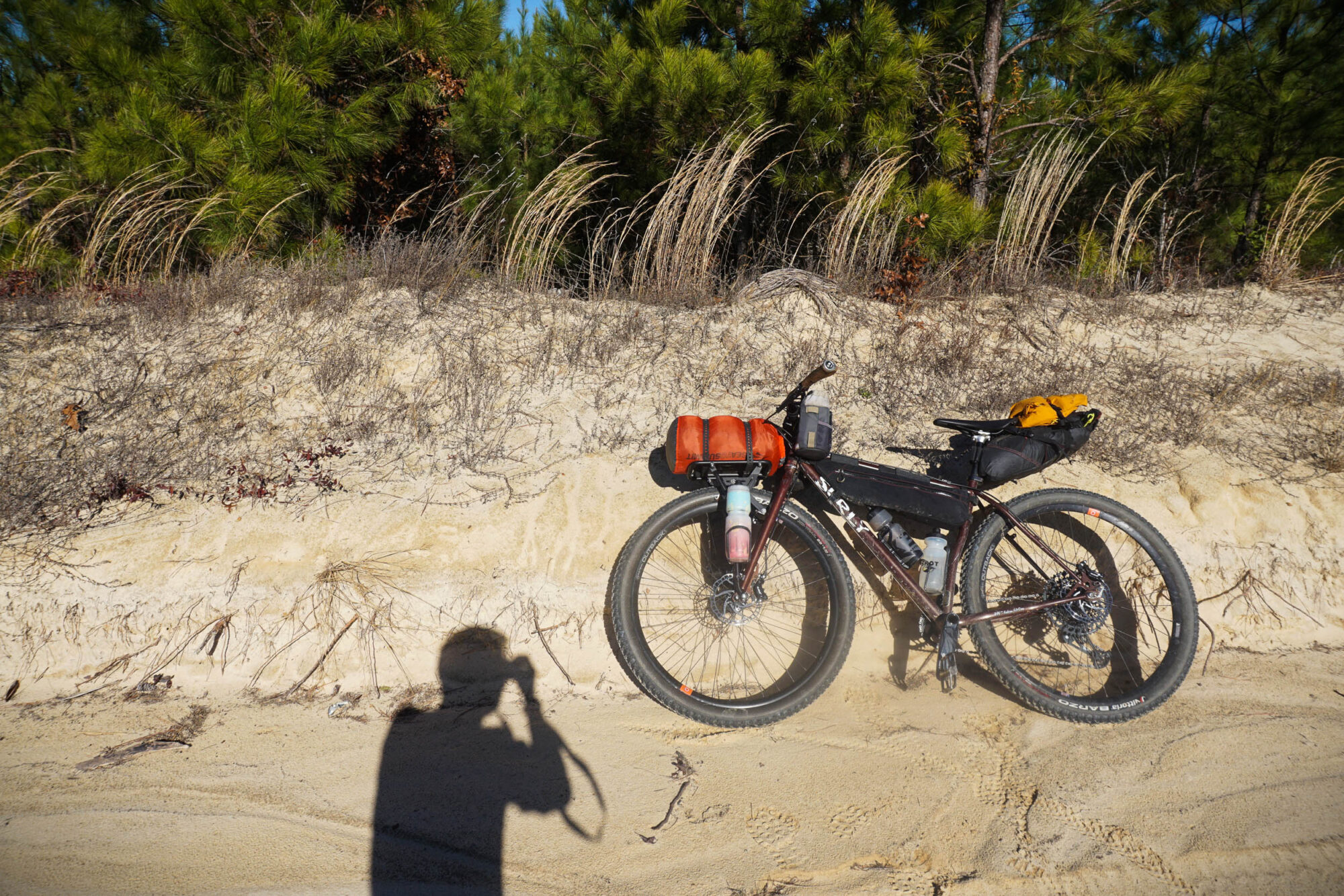
South Carolina has been my home for almost 15 years now. The longer I’ve been here, the more I’m aware of how that lonesome land shaped me. There is caliche dust in my lungs and stock tank water in my blood. Living now among the towering oaks, the bottomland hardwood swamps, the light-choking canopies, the abundant water, and the claustrophobic roadways, I’ve longed to find a nearby taste of some lonesome country.
Sandhills
The Carolina Sandhills is a strip of sandy hills through the center of the Carolinas and Georgia. Generally, the region is carved up into a mosaic of tree farms and some sand-tolerant agriculture. It’s working land. From the highways, it can feel overworked, exploited.
But somewhere away from the interstates, on the way to nowhere, is Carolina Sandhills National Wildlife Refuge and its neighbor, Sand Hills State Forest. The refuge is “one of the Southeast’s premier sites for viewing the rapidly diminishing longleaf pine/wiregrass ecosystem.” This landscape, once widespread across the southeastern US coastal plain, now only exists in fragmented patches. The refuge and state forest offer public access to this landscape.
But you won’t find flocks of tourists there. They are lonesome lands. And there are hundreds of miles of sand and gravel roads open to bicycles.
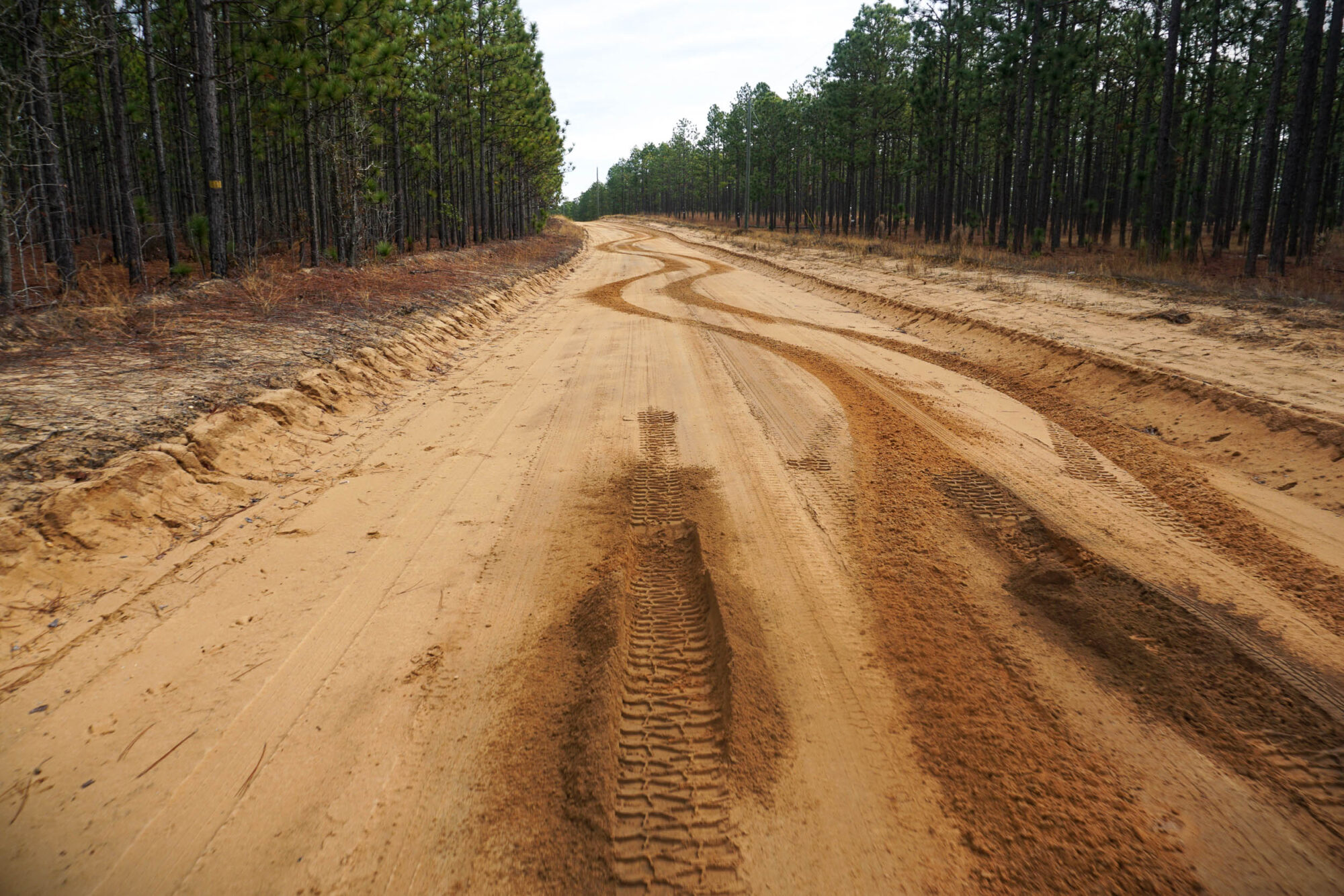
Sugar Sand
The first time I rode my bike out there, the sand caught me by surprise. That seems a bit silly, given the place’s name, but these kinds of sandy roads are unfamiliar to me. I burned through my legs and my energy reserves pretty quickly. A bit of power from every pedal stroke dissolves into the substrate, and it adds up. My old singlespeed brain kicked in, and I stood and mashed my way through it. That is, until the last few miles, where even my granny gear was useless to overcome my spent legs, and I resorted to walking up the punchy, sandy hills.
Despite my sand-riding ignorance, my suspicion that the area was full of lonesome country was confirmed. That power-draining sand also drains water. The xeric pine savannas are so different from the dense hardwood forests of the piedmont or the vast floodplains of the coastal plain. The groves of oaks are short and gnarly, similar to the scrubby trees of my Texas upbringing. Everything feels a bit thirsty. Instead of the musk of decay, there is the crisp smell of dry grass and the sweet scent of pine straw.
Then there are the grasslands. When I came upon the first of them—rolling earth with grasses bowing with the breeze, spotted with clusters of trees, a horizon stretching out in dizzying breadth—my stomach churned with nostalgia. My mind flashed to the vistas beyond the skinny local roads south of my hometown, where my friend and I would ride from our houses. We had no reason to do it except that we could and we wanted to. No fitness goals, no destination, just wandering around. We didn’t ride far, but for a couple of high school kids, we may as well have been in Mongolia.
So, the following winter, I returned to the Sandhills with 80 miles of dirt roads mapped and camping gear for a solo overnight.
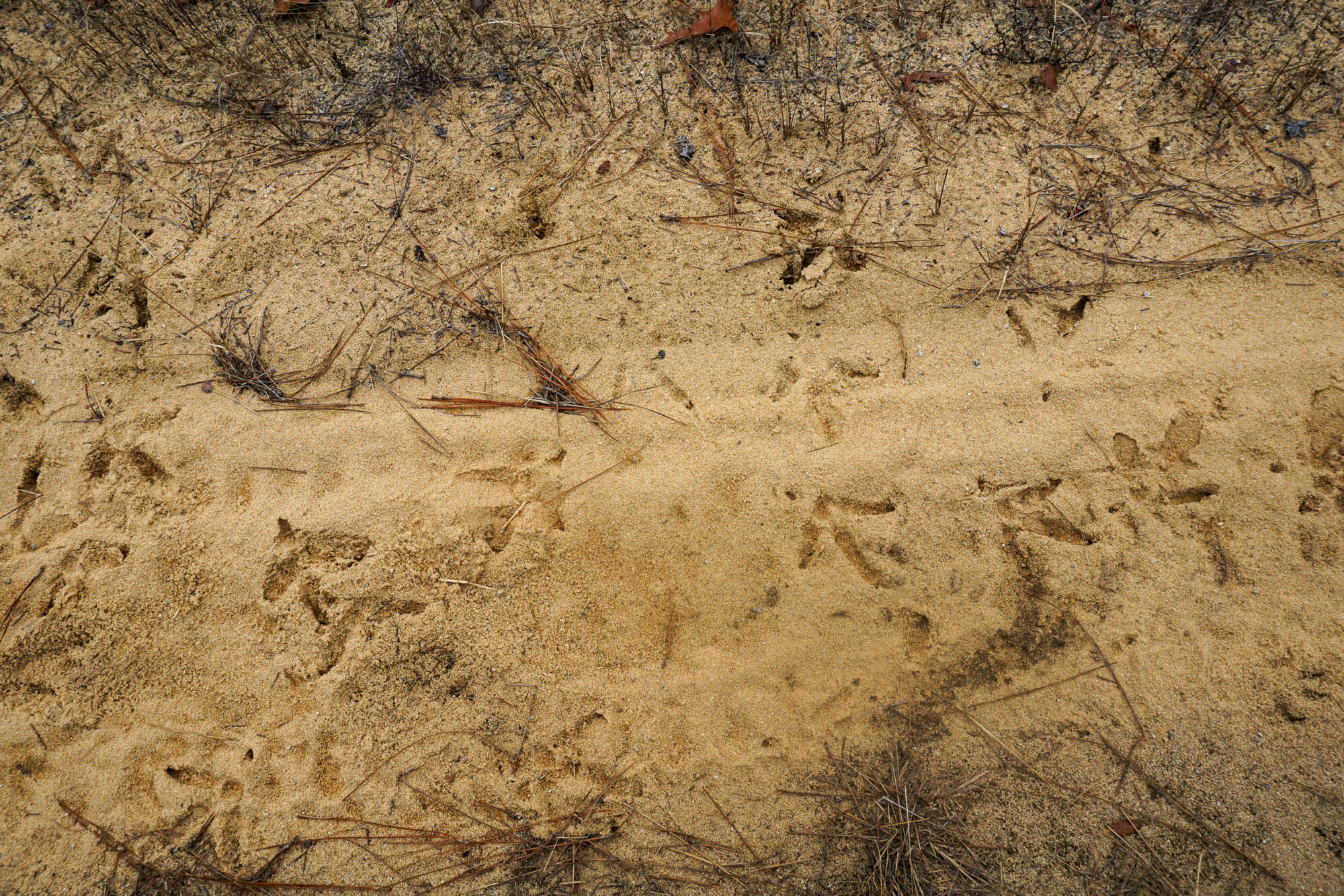
With my bike packed and proper expectations for riding in the sand, I pedaled up the first road without hurry. Immediately, I noticed the tracks in the sand: raccoon, turkey, deer, coyote, and even bobcat, all on top of (and thus more recent than) the tire tracks of trucks and four-wheelers. With some recent rain, the “sugar sand,” as it’s known, was the consistency of brown sugar and held on to the shape of the creatures’ meanderings. I imagined a scene that might come from one of my kid’s storybooks: a gathering of forest creatures parading down the road on hind legs and playing instruments, celebrating something like one of their birthdays.
Lonesome Lands
Some distinctive things about lonesome lands are that they’re subtle and invite a sense of longing. In the Rocky Mountains, in the company of such orogenic grandeur, there is much awe. It’s humbling and exciting to stand before such glory. In the hollers of Appalachia, hemmed in by rhododendrons and mountain laurel, there is solitude and great beauty, no doubt. But there is something about the lack of a horizon, that ceiling of tree canopy and the walls of the ancient mountains, that keeps the longing at bay.

The beauty in the Carolina Sandhills is indeed subtle. It doesn’t take your breath away, but it asks you to slow it down. Where the majestic landscapes inspire adoration, lonesome lands invite somber contemplation. The longing, which is the best word I can find for it, is the feeling that I must be the only one on this earth and that if there were others, they wouldn’t choose to be here; that there are mysteries hidden in the subtlety that I can’t make myself small enough to see; that there is beauty in the thirst; that there is something here that I don’t quite understand, yet I long to know. It’s a mystery why I find this kind of landscape, and the reflections it summons, attractive at all. Maybe it’s because of the nostalgia, or maybe there’s something deeper going on. Still, I find it necessary.
Of course, I was not alone, as the tracks in the sand bear witness. The refuge is home to myriad creatures, common and rare, some of which are adapted to the longleaf ecosystem. The most famous resident is the federally endangered red-cockaded woodpecker, a specialist tied to spacious pine forests that excavates cavities in the sides of pine trees for nesting and roosting. There are 190 other bird species filling the mosaic of habitats—the pine forests, the creek bottoms, and the grasslands. Don’t forget about the 1,000 species of plants, some rare, such as the charismatic and carnivorous pitcher plants found in small streamside bogs called pocosins.
When I came to the grassland area that caught my attention the first time, the nostalgia returned. Without an agenda and plenty of time in the day, I laid my bike on a grassy side path and wandered around on foot. I skirted the edges of wetlands and ran my hands through the tops of the grasses. I read the interpretive signs and turned around and stared into the big empty.
Blackwater
Within the refuge, you get to ride around gates and cruise roads closed to vehicles. These roads are sometimes gravel, a welcome break from the sand. I meandered through the patchwork landscape without seeing a soul.
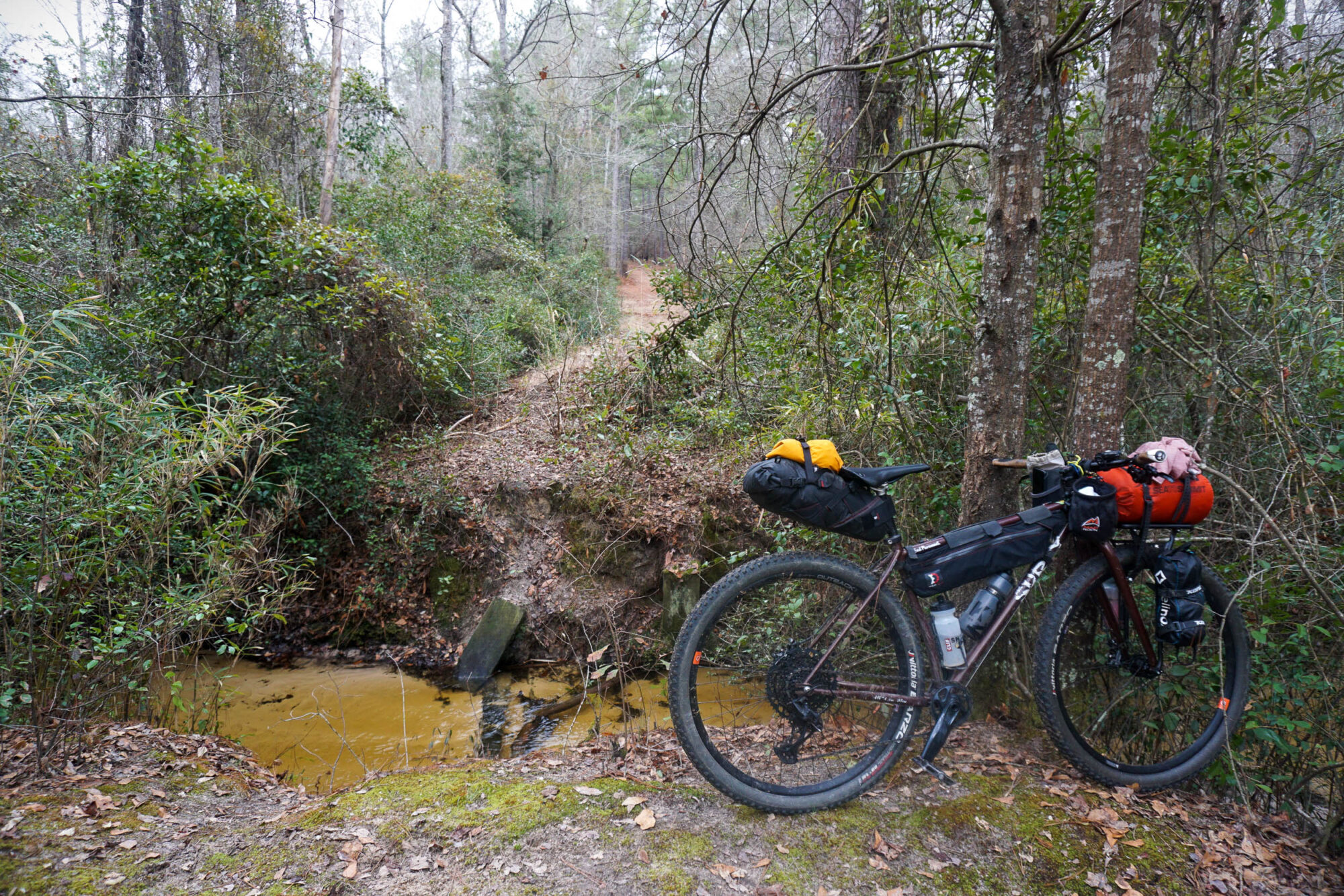
Halfway through the first day, the road suddenly became overgrown and petered out to a trail and then a bramble on the bank of a creek without a bridge. Rattlesnake Branch, less than two bike lengths wide and calf-deep, would hardly have been an impediment except for the eight-foot-tall vertical banks. I had one pair of shoes and didn’t want them soaked, so I took them off and was able to finagle my bike down into the creek bed and back up again.
The creeks that head in the sandhills are clean and cold. Their sources are springs that arise from aquifers near the surface and runoff filtered through the sandy soil. As the creeks run coastward and gather themselves into streams and rivers, their floodplains expand. The detritus of the bottomland forest decays into the water, leaching tannins and coloring it like coffee.
The “blackwater,” as it’s called, has its mysteries, though not the same lonesome ones. The contrast between the uplands and these bottoms is striking. All that is drained from the former concentrates into the latter. All that openness and longing gets compressed into those black veins. It is thick in the bottoms. The streamside trees arch over the water like the ceiling of a cathedral and are almost always reflected in reverse on the stained water. It’s a disorienting effect in the right light. The water is not sluggish; it churns and swirls through its sinuous courses, piling against banks and slipping over fallen trees with urgency, though the sounds of such constant action are absorbed into the density of the floodplain.
I’ve come to love South Carolina’s blackwater streams and swamps, especially from the seat of a canoe. But this was a different trip with a different purpose. I scrambled out of Rattlesnake Branch and pedaled for higher ground.

Sandstone
I came across an outcrop of sandstone I had hoped I’d find again, the location I had forgotten after the first ride. It was good timing. I leaned my bike under the slight overhang and put on my jacket just in time for a rain shower. Besides the interesting rock itself, a seemingly random protrusion in the forest, the longleaf savanna here is quintessential. It’s a great spot for a rest.
The sandstone is cretaceous (at least 66 million years old). The overlying sands are thought to have derived from this sandstone after millions of years of weathering and reworking. During the last glacial maximum some 20,000 years ago, a drier and windier climate mobilized the sand into dunes, which later stabilized into the hills I was riding over. Places have not always been the places we know now.
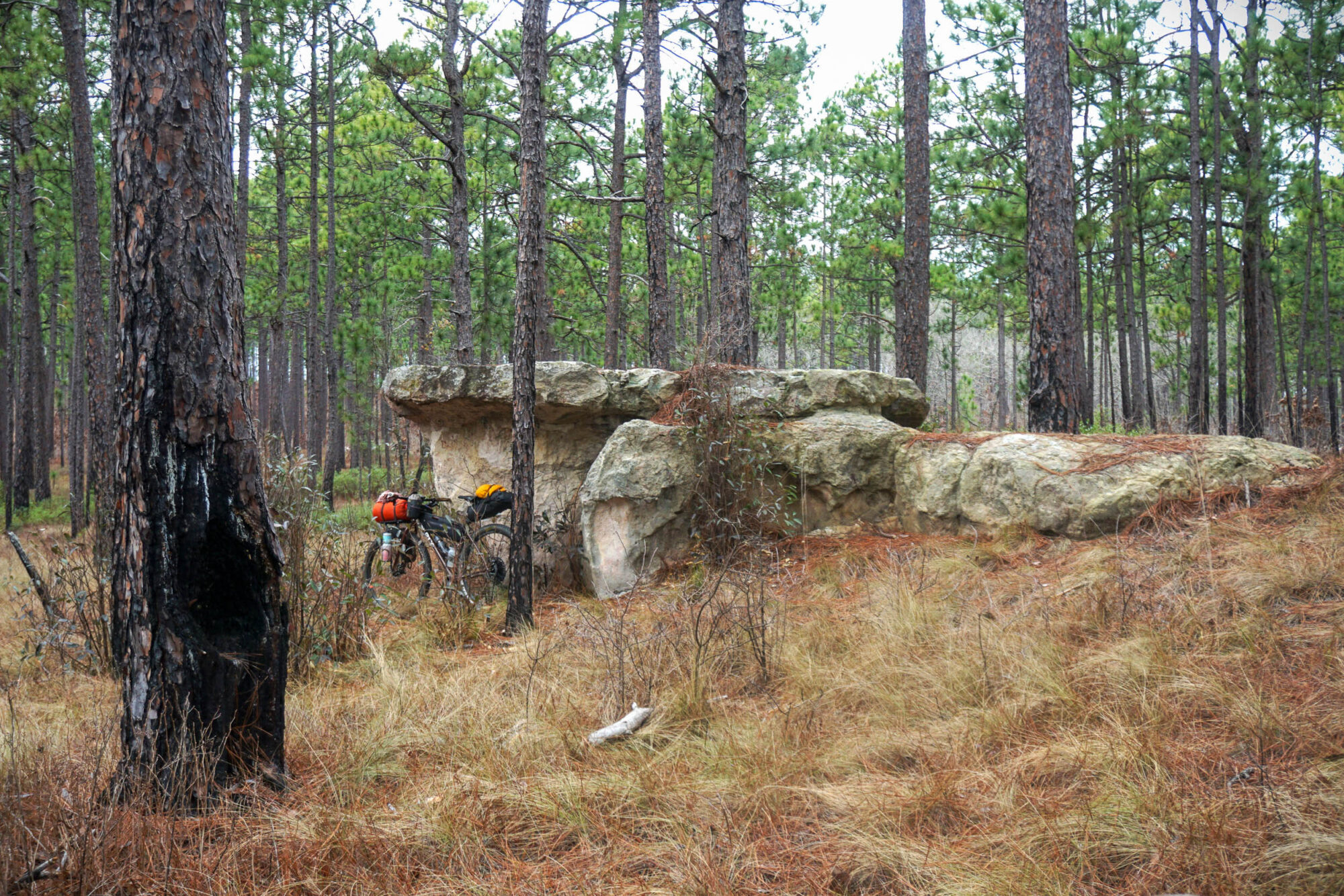
The shower passed, and I pressed on, out of the refuge, through more sugar sand, and arrived at the campsite in Sand Hills State Forest. The rain came back, this time with thunder. Thankfully, the pond-side campsite had a shelter, where I stayed for the rest of the night, cooking, reading, and sleeping.
Fire
Behind the rain was wind, and I woke up at 4 a.m. to pine cones pelting the shelter’s metal roof. Sleeping through the barrage was impossible, so I called it morning. When I tried to light my stove for coffee, I realized my Snow Peak Mini Flame (a small gas candle), which I had turned out before going to sleep, had drained all my fuel overnight. It wasn’t that cold, but it was still winter, and I wanted my coffee and oatmeal hot. I gathered sticks and built a fire big enough for a bed of coals on which I could place my pot. It started raining again out of nowhere, but the fire lasted, and I got boiling water, which is to say I got my hot coffee and oatmeal.
This whole landscape is shaped by fire. The longleaf pine and wiregrass ecosystem is dependent on frequent fires to keep its shape. While natural fires were ignited by lightning, it is understood that Indigenous cultures managed the landscape by setting intentional fires, encouraging the open understory for easier hunting and foraging. Today, remaining longleaf forests are intentionally managed with prescribed burns.
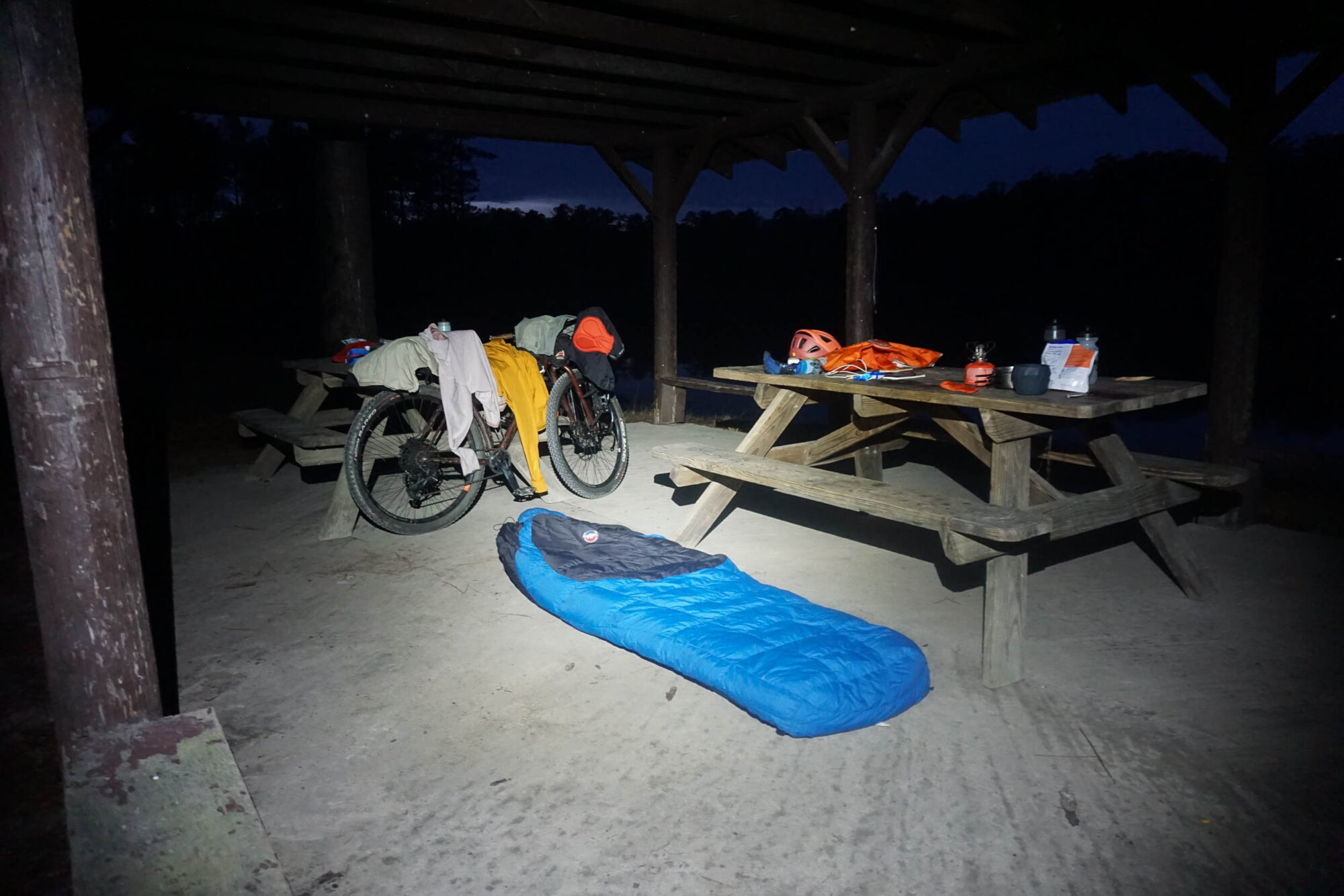
The reality of most places is that they are managed, and have been managed, by people. The pressing question is whether we will manage them well or fall into our all-too-common shortsighted traps. The land here was once a mess of failed agriculture during the Great Depression. New Deal policies created the refuge, and nearly a century of restoration efforts have made it what it is today. Places like Sandhills National Wildlife Refuge remind me of what’s possible when we choose to manage well.
Genesis
The clouds started breaking apart. An almost full moon lit the sandy road next to the campsite in a hazy glow. Instead of sitting around waiting for the sun, I packed up and got rolling about 5 a.m., with an hour and a half of darkness ahead of me.
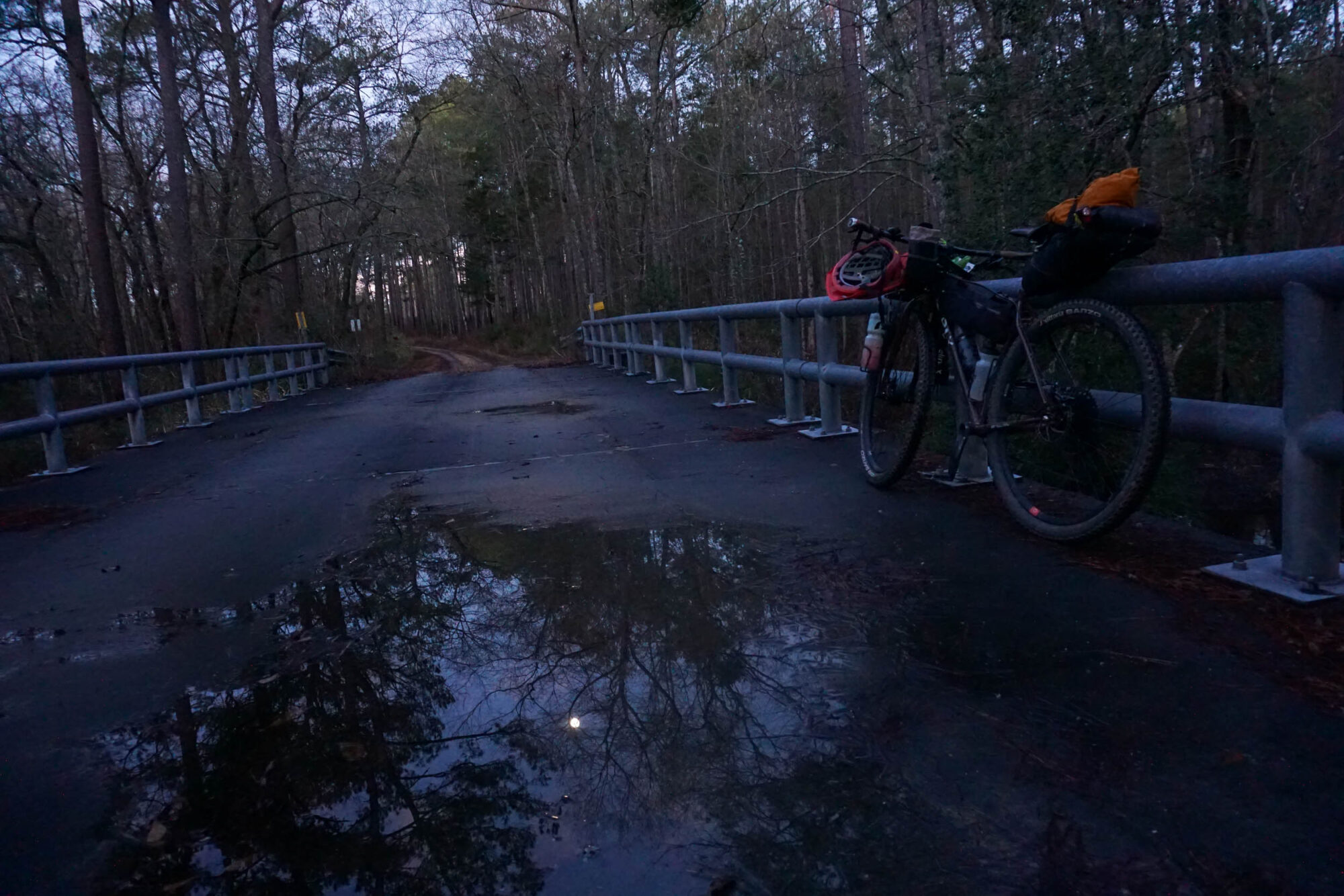
I’ve ridden in the dark countless times in the city, but this was my first time riding in the dark, alone, in the middle of nowhere. Other than at the campground, I had seen literally no one else the previous day, and chances were zero that I would see anyone this morning. The feeling of solitude was total. Banks of clouds blew across the moon, causing the woods beyond the beam of my light to alternate between a fuzzy impression of forest and just black. The piles of sand on the roadsides could easily be confused for snow banks.
Birdsong swelled slowly and methodically with the faint and growing light. I paused at a bridge over Black Creek. The moon and the dawn and some energetic barred owls had me feeling like I’d ridden into another world.
The moon led me onward. Most of the clouds had raced away with the wind. I was back in the refuge and onto gravel—the smoothest of the trip—when I rolled into the edge of another grassland. This time, my breath was taken away. The moon hung hugely over the horizon as the new dawn burned across the openness. The cold wind washed over me. I laid my bike down and sat. Unidentified birds scattered over the horizon. I watched two northern harriers scan the contours of the wetlands.
I felt lucky to witness the morning there. The pine cones on the roof were an alarm, and that place, at that time, was where I was supposed to be. It was like I had watched the first day, the greatest and most lonesome mystery, like God said, “Let there be light,” and the world was born before my eyes.
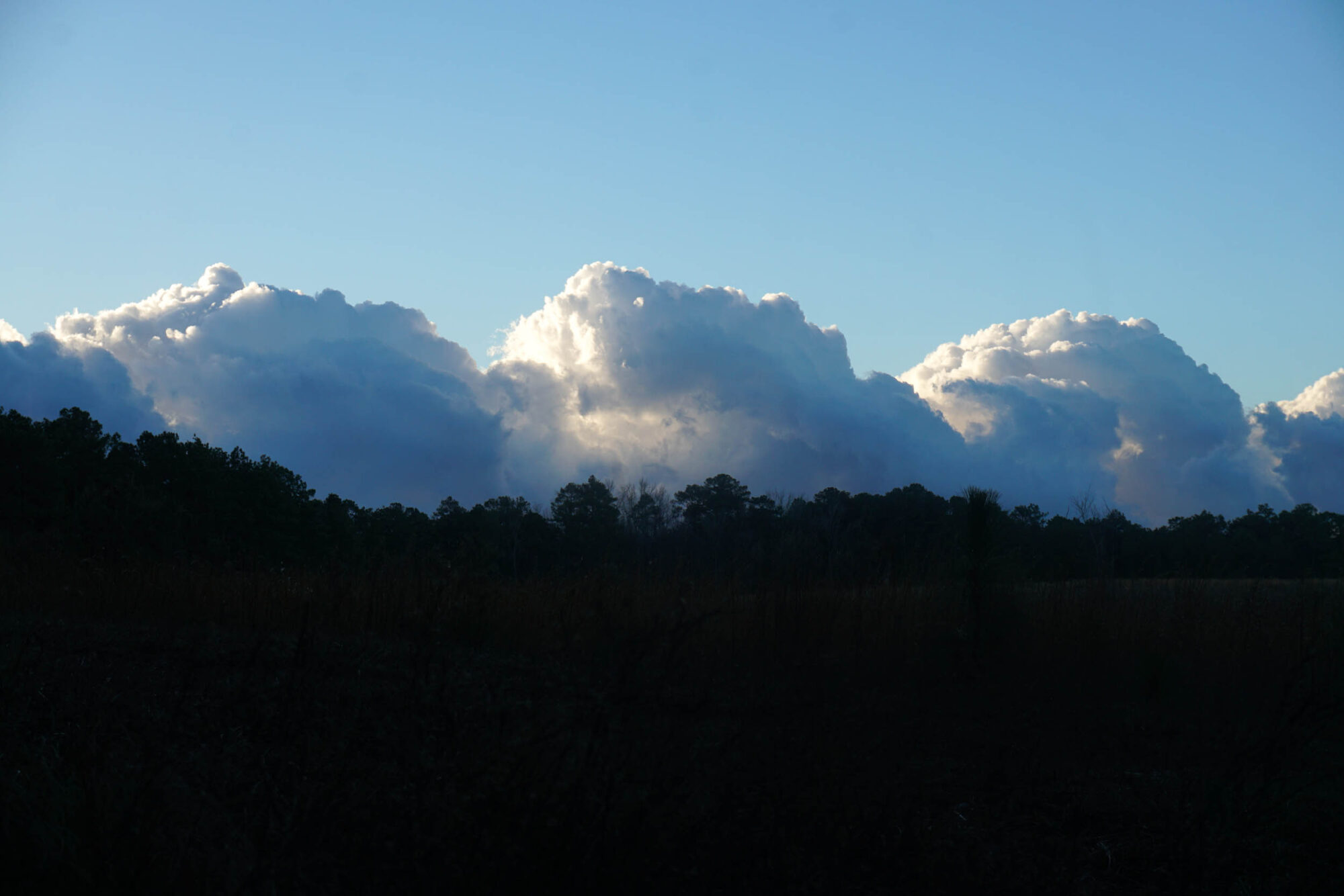
I learned from my kids that sometimes, the best reaction to these moments is to laugh. So, I sat and ate some snacks for a while, smiling and laughing.
Smoke
It was hard not to judge the rest of the day against that moment. Everyone knows a cliché that goes, “Be careful what you wish for.” I had longed for a taste of the lonesome lands of my growing up, and the 30-mile-per-hour headwinds delivered. The wind is a constant companion in West Texas. I was out of the refuge, riding some exposed paved roads between fields with nothing to break the wind. Some gusts were strong enough to nearly stop me in the middle of my pedal strokes.
It felt like another lifetime that I had witnessed the beginning of existence. There was some cursing and some criticizing decisions I “should” have made differently. Then, I was reminded that maybe I was taking myself too seriously. Isn’t it always the case that the moments of clarity you want to hold on to most are impossible to keep? I know better. There are only glimpses. Or as T.S. Elliot wrote, “These are only hints and guesses, Hints followed by guesses.”

Finally, I was back onto dirt for the last stretch of the trip, and I caught the sweet smell of smoke. I turned and found the ground on one side of the road black with ash. The lowest branches of the longleaf pines were brown from the recent heat. The burn bordered the road for a few miles. Then, less than a mile from my car, there was a lone stump still smoldering, sending small plumes of smoke across the road. If I had witnessed the birth of creation earlier that morning, surely that stump was the sign of resurrection. What life will rise from those lonesome ashes? I’ll have to wait for my next trip out there to find out.
Further Reading
Make sure to dig into these related articles for more info...
Please keep the conversation civil, constructive, and inclusive, or your comment will be removed.






